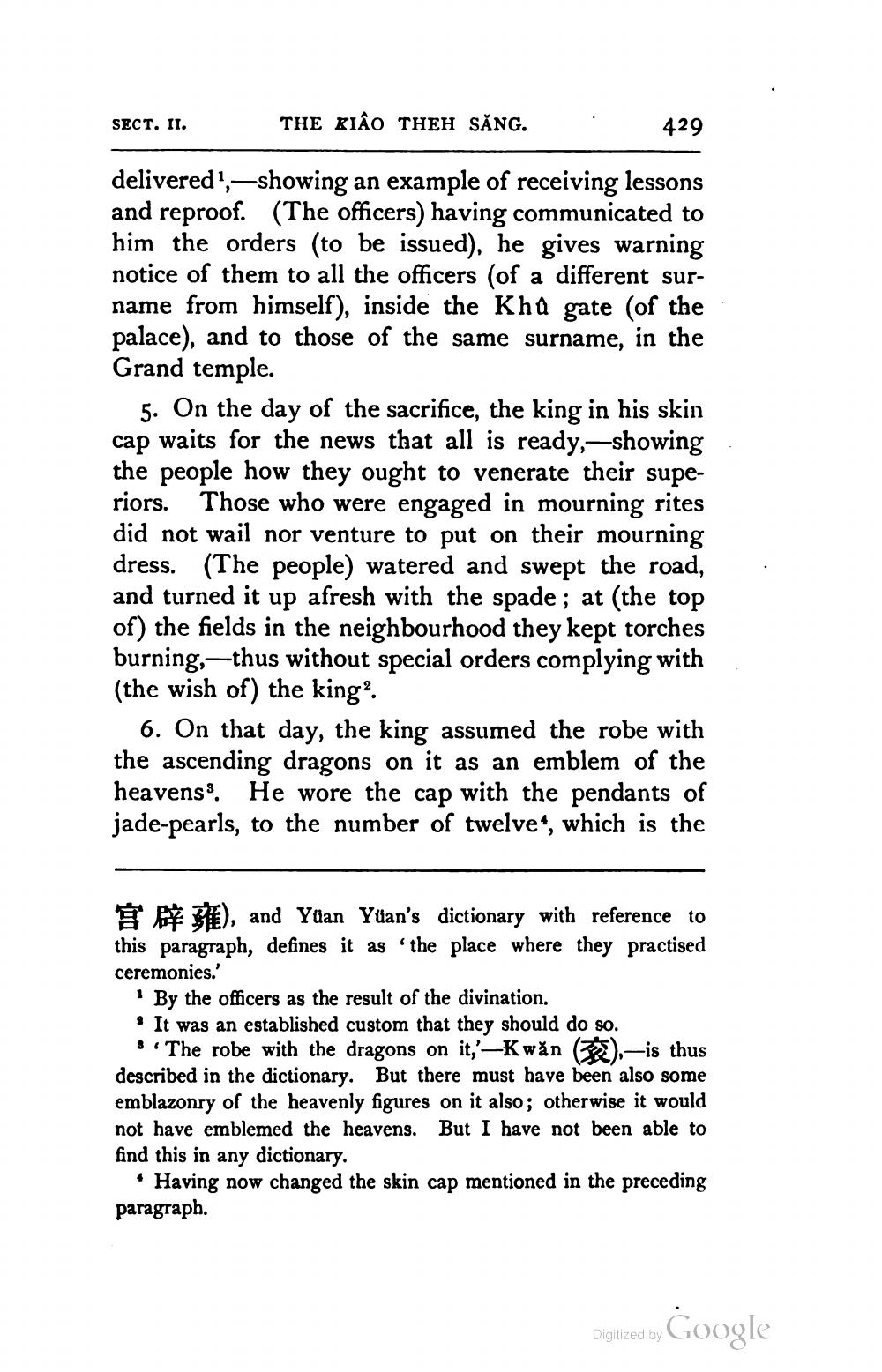________________
SECT. II.
THE KIAO THEH SÁNG.
429
delivered",—showing an example of receiving lessons and reproof. (The officers) having communicated to him the orders (to be issued), he gives warning notice of them to all the officers (of a different surname from himself), inside the Khů gate (of the palace), and to those of the same surname, in the Grand temple.
5. On the day of the sacrifice, the king in his skin cap waits for the news that all is ready,—showing the people how they ought to venerate their superiors. Those who were engaged in mourning rites did not wail nor venture to put on their mourning dress. (The people) watered and swept the road, and turned it up afresh with the spade ; at (the top of) the fields in the neighbourhood they kept torches burning,—thus without special orders complying with (the wish of) the king?
6. On that day, the king assumed the robe with the ascending dragons on it as an emblem of the heavens. He wore the cap with the pendants of jade-pearls, to the number of twelvet, which is the
T 5 ), and Yuan Yuan's dictionary with reference to this paragraph, defines it as 'the place where they practised ceremonies.'
By the officers as the result of the divination. . It was an established custom that they should do so.
8.The robe with the dragons on it,'—Kwăn ,-is thus described in the dictionary. But there must have been also some emblazonry of the heavenly figures on it also; otherwise it would not have emblemed the heavens. But I have not been able to find this in any dictionary.
• Having now changed the skin cap mentioned in the preceding paragraph.
Digitized by Google




